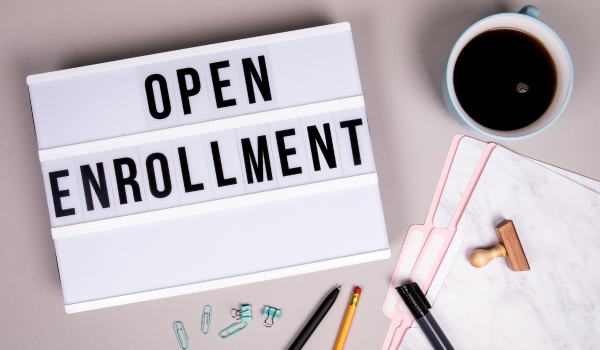How to Manage Your Team’s Vacation Requests
Here's how to prepare in advance and avoid panicking when all of those vacation requests start...
3 mins

The open enrollment period is usually two to four weeks, in October or November. Enrollment may, in some cases, such as health insurance obtained under the Affordable Care Act, be allowed up to mid-December. Some programs offer enrollment every six months and have a second enrollment period available in June, although this is not common.
It is vital that employees make these choices when they can. Otherwise, they may miss enrollment and lose insurance coverage or other benefits. If they fail to make timely requests, they must wait a year until the next open enrollment period to make any adjustments. The only exceptions are if they are new hires or if they have a qualified triggering event, such as the birth of a child.
New hires typically have 30 days after their hire date to make enrollment decisions. Explaining the benefits and enrolling new hires should be part of their official onboarding process.
These issues are extremely important to employees. A study by WTW that surveyed over 35,000 employees found that 60% of employees felt that health insurance and retirement benefits were good reasons to stay in a job, and 39% said that health insurance benefits were a reason to change jobs.
For HR professionals, business owners, and office managers coordinating and overseeing their organizations' open enrollment processes, these open enrollment tips will guide you in ensuring a hassle-free open enrollment period.
The best practices include planning ahead, excellent communication through multiple modalities, and having a secure audit process.
Start planning for open enrollment at least one quarter before the enrollment period begins. For the best results, preparing for the following year starts after completing this year’s enrollment.
Make changes to the benefits offered based on the feedback received from employees during the previous year. Pay careful attention to cost increases and coverage limits that have changed over the past year.
Create a comprehensive employee education plan to convey the benefits information. Automate the process as much as possible.
Inform employees early and communicate via multiple channels. Use email, text messages, print materials, group presentations, and one-on-one communications to achieve 100% compliance. Have employees sign off on any changes they will make to their benefits and sign off if there are no changes as well.
Guide employees by highlighting what is new, what has changed, and how it might impact their decisions.
Self-service portals can be used for employees to access information about benefits programs easily. Choices made after being audited for accuracy can be transferred securely to insurance carriers via benefits administration software.
Have an auditable process that tracks employee participation so you can easily see who submitted their enrollment forms and who has not. It is a good idea to double-check the payroll during open enrollment to ensure accuracy and that the company is making the proper contributions and using the proper deductions.
The best practices for managing employee benefits use electronic enrollment with automated reminders and reporting. Use the audit process to match the carrier invoice data with the employees’ choices. Usually, a carrier will have a time limit on retroactive changes. Double-check the choices of insurance plan and dependents’ coverage. Audit the enrollment data to match the carrier charges.
Pay careful attention to these dates:
There are two audits to conduct. The first is an enrollment audit to ensure that the enrollment process is complete and accurate. The second is a carrier cost audit to ensure that the insurance coverage is correct and billed properly by the insurance carrier(s). Any discrepancies should be remedied during the grace period allowed for making retroactive changes for the coverage period.
An employee benefits campaign is an important part of internal communications. Hold in-person and virtual enrollment meetings to explain the complex aspects of benefits and answer questions. Give employees a checklist with due dates. Inform employees as the deadline date is approaching.
Use visual aids, such as short instructional videos, whiteboard animations, memes, infographics, and charts, to help clarify the key elements. Offer incentives for early-bird enrollment. Make it interesting and fun for employees to get the benefits they are entitled to receive.
Many employees feel that the various options for benefits create more questions than answers. It is easy to be confused about the array of choices. Create a knowledge base with frequently asked questions. Be sure to keep the information accurate and current. Add new questions as they come up in discussions with employees.
Request employee feedback on the benefits offered with an anonymous survey that allows them to comment on what they like or dislike.
Streamline your open enrollment process with Exact Payroll's seamless integration capabilities. Want to simplify this crucial period? Learn more about how we can assist you today! Contact us.
Here's how to prepare in advance and avoid panicking when all of those vacation requests start...
3 mins
Payroll software systems can help your small business streamline payroll processing while ensuring...
4 mins
Many owners don't realize that they have small business insurance coverage gaps until they find out...
4 mins
Exact Payroll Inc
3993 Huntingdon Pike Suite 110
Huntingdon Valley, PA 19006
Mon - Fri: 8:30AM - 5:00PM
Company
Subscribe to Newsletter